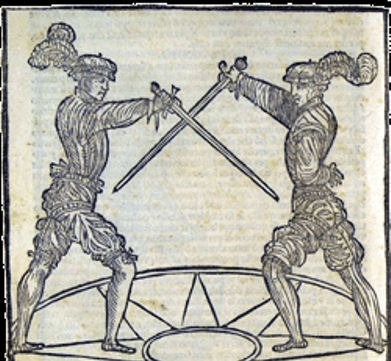In my post on Training the Ranges of your Ability I shared the idea that if you were to measure your martial ability on a scale of 100 you would never be able to pin point an exact value in a meaningful way because we all fluctuate on that scale based on our fitness, mindset, restedness, how warmed up we are and a myriad of other factors.
In this post we’re going to look at training that should be done when you’re at your best.
Training the Top of Your Game
When you’re at your best it’s a good time to work on strategic training and pushing your technical edges. Strategic training involves creating circumstances with training partners that require you to analyze their strengths and weaknesses and formulate plans to apply your own assets against them. Here are a few combative games I use with my students.
The Robot Game
Partner A takes on a simple fencing program. The program has a defensive condition and response and an attacking condition and response. When the defensive condition is met - for example an attack - the response is made. When the attacking condition is met - for example the opponent stepping into range - the attack is delivered. Start with simple programs where you always make the same defence regardless of attack (perhaps choose a defence that covers a lot of lines) and you only attack in one manner at one particular time. Then Partner B has to figure out the program and defeat Partner A. Ideally they do this without being struck at all but they should keep going unit they have figured out the way to defeat the program regardless. At the point of success it can also be fun for Partner B to articulate the strategy of Partner A as they believe it to be.
As you get better you can add more parameters and gradually build a more sophisticated yet reliable robot to analyze and defeat.
The Archetype Game
A more advanced version of the robot game. Partner A takes on a particular fencer role such as a “parrying-centric opponent” or “someone who backs up a lot” or an “aggressive opponent”. Partner B must then assess the situation and build an appropriate strategy to defeat the archetype. Playing an archetype can be useful practice for Partner A who can explore fencing in a different context than their usual strategy, and Partner B has the opportunity to face weaknesses and alternate fencing styles they may not face in your school.
The Targets and Tempos Game
Partner A and Partner B are going to fence. Partner C is going to watch and orchestrate. Partner C whispers a vulnerable target area into the ear of A and B. All targets are ignored when struck except the vulnerable area. Both A and B must fence while eliminating targets and attempting to identify the weakness of their adversary.
In level 2 of this exercise, Partner C gives a vulnerable target area and a tempo of attack that the given partner must strike in. For example Partner A may be told that they’re left leg is the vulnerable target and that they must only strike in Contra-Tempo (as the opponent attacks) while Partner B may be told that their head is vulnerable and that they can only strike in Prima Tempo (as the opponent moves into range). If Partner A strikes a valid target they must assess whether they did it in the correct tempo, if they did not they must call back their strike and keep fencing.
This exercise allows for a lot of creative strategic exploration as you determine how to strike in a given tempo and strike a potentially hard to reach and well defended target.
—
Next week I’ll explore training for the bottom of your game, where the focus is on fundamentals of technique and narrowing the gap between your worst performing days and your best.
